The digital landscape of Calgary presents both opportunities and challenges for all types of brands and businesses seeking to make their mark online.
As companies utilize various digital platforms to engage customers, establish their brands, and drive sales, in 2025, search engine optimization has become a vital service for success.
A Calgary SEO company enables organizations to enhance their visibility and ensures the right audiences can discover them with ease. This article shines a spotlight on the crucial role SEO agencies play for firms operating in Calgary’s competitive digital ecosystem.
What Is an SEO Agency?
An SEO agency is a team of passionate Calgary SEO experts dedicated to perfecting your digital presence.
Through strategic link building, technical audits, and content engineered to capture keywords, they’ll boost your site’s authority and earn your front-page exposure in Google.
Their practical approach yields tangible traffic that converts curious visitors into loyal customers. Read about each company listed below, contact them, have a chat, and then partner to scale your venture to new success.
Top 5 Best SEO Companies in Calgary to Partner with in 2025
This year, commit to growth by committing to the best. We’ve handpicked Calgary’s top SEO 5 agencies to pique your interest!
Each agency listed here offers custom campaigns and white-hat tactics tailored to your goals. Dive into their innovative case studies and see verifiable results that compel clients to soar.
Compare specialized services, approaches, and track records so you can choose the perfect partner to propel your potential. While there are tons of options to choose from, these digital marketing companies offer customized and unmatched services that can help any business grow.
Digital Monk Marketing
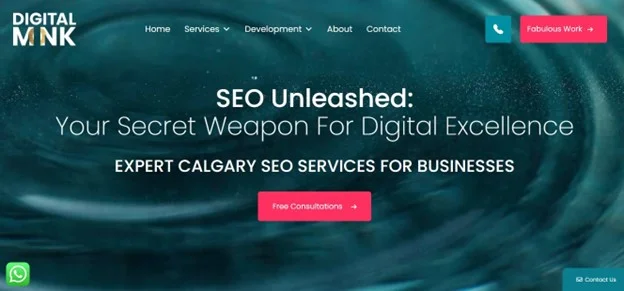
Digital Monk Marketing is a leading Calgary SEO company that has been serving local and global brands and businesses for years. As a data-driven company, they leverage thorough keyword research and competitor analysis to craft customized strategies that elevate websites locally.
Their dedicated SEO Calgary team understands the city’s demographics to target growth effectively. Digital Monk maintains transparency through project updates and reporting, ensuring clients achieve maximum results.
They go above keywords to optimize user experience and conversion rates as well. No matter what type of search engine optimization services you want, it ensures your businesses get elevated online with ease.
GrowMe Marketing
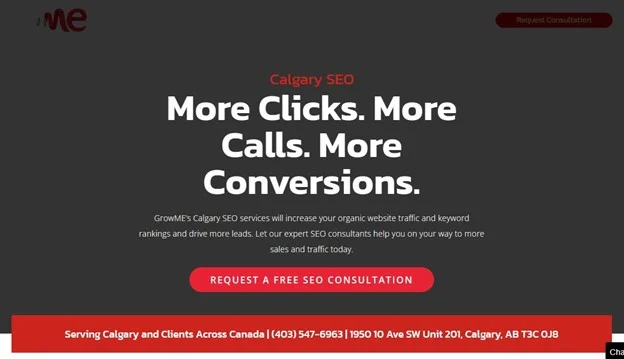
GrowMe Marketing takes a comprehensive approach to Calgary’s SEO success. Their local specialists design tailored plans meeting clients’ precise goals to boost traffic, leads, or sales locally.
Constant performance tracking allows refining strategies for continually raising impact. GrowMe Marketing also provides transparency through regular communication and insights into website progress within Calgary’s market.
Thrive Agency
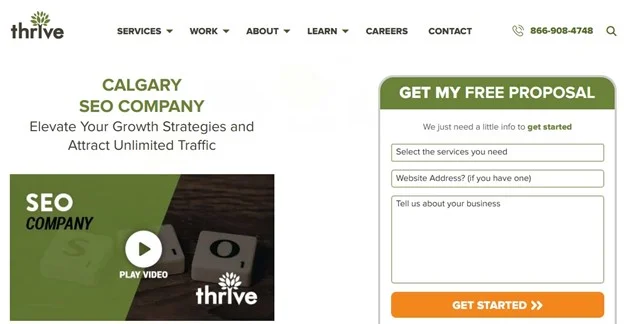
With over 15 years of experience, Thrive Agency guides clients expertly through Calgary’s digital landscape. Their award-winning portfolios showcase capabilities like content, technical expertise, and Google Ads expertise.
Thrive builds long-term partnerships through customized roadmaps, delivering sustainable growth. Staying informed on industry shifts, their certified team keeps client websites visible as algorithms evolve.
x360 Digital
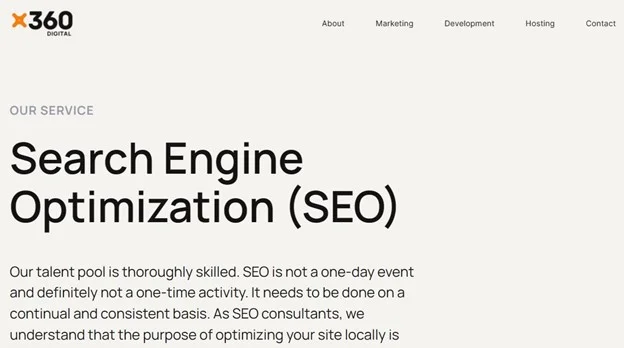
x360 Digital measures impact through data-driven Calgary SEO. Ongoing tracking exposes opportunities by analyzing clients and competitors.
Their specialist team addresses technical capabilities crucial for Google, ensuring smooth experiences. X360 Digital offers regular consultations and transparent reporting to inform progress and adjust strategies to greater heights locally.
Brave Design
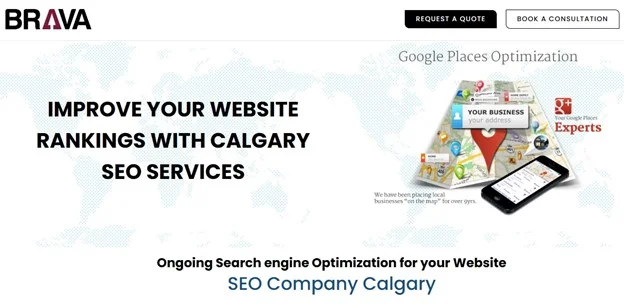
Brave Design offers a unique blend of SEO prowess and design talent. Beyond keyword optimization, they craft visually compelling websites, increasing engagement.
Brave Design’s focus on user-friendly navigation converts Calgary visitors into loyal customers. Their collaborative approach understands client brands to reflect visions accurately through optimized yet captivating websites.
Can SEO help enhance our branding efforts?
SEO can really help show off your brand to more people; there’s no doubt about that. When searchers find your website easily, they get to know what you stand for through your content and services. SEO spreads the word about your brand values to around 30% more visitors organically. It can definitely help you establish yourself online, even if your brand is new.
What are the latest trends in SEO that we should be aware of?
It’s important to keep up with changes in SEO as new things like voice searches on phones are happening. Around 20% of searches are now done by talking instead of typing, and local SEO services for stores near customers is also growing fast. We’ll make sure your SEO adapts to new trends and make your websites comply with the guidelines so you don’t lose visitors.
How can local SEO help in reaching our target audience?
Local SEO and Calgary social media marketing are key if you have shops in different cities. Around 60% of local searches are for stores within 10 miles, so being found nearby grows business. We create and optimize your business listings on Google Maps and other local search tools. We also make local web pages and get reviews to attract local customers and boost sales.
How do you measure the success of an SEO campaign?
Tracking your SEO results lets us improve it and other marking tactics like email marketing over time. We watch how many extra people visit, where they find you, and if visits turn into sales. Things like higher search rankings, more time on site, and increased profits each month prove SEO is working well. Don’t worry. Throughout the campaigns and after they end, we will provide a detailed report to help you understand everything.
Final Words
A Calgary SEO partner is pivotal for prospering online. But selecting just any agency won’t maximize ROI – you need a team of pros attuned to algorithms and analytics.
Research innovative leaders approved here to improve your search engine rankings and conversions with creative link-building, technical tweaks, and headline-worthy content.
Your search ends now – sign up with strategic specialists and watch exposure, sales, and success ascend to new elevations.
Reference: https://en.wikipedia.org/wiki/Local_search_engine_optimisation

